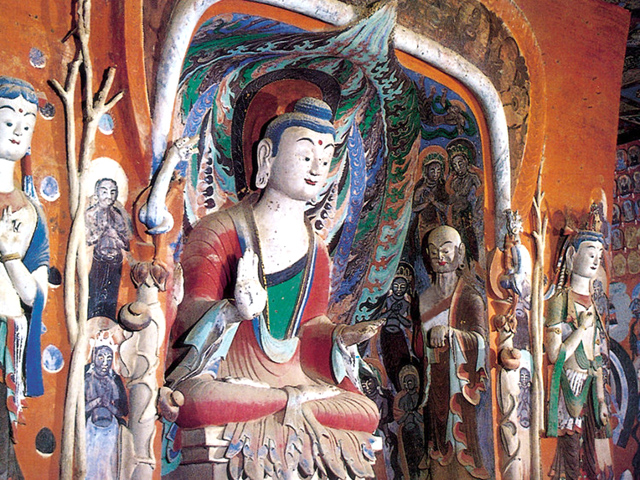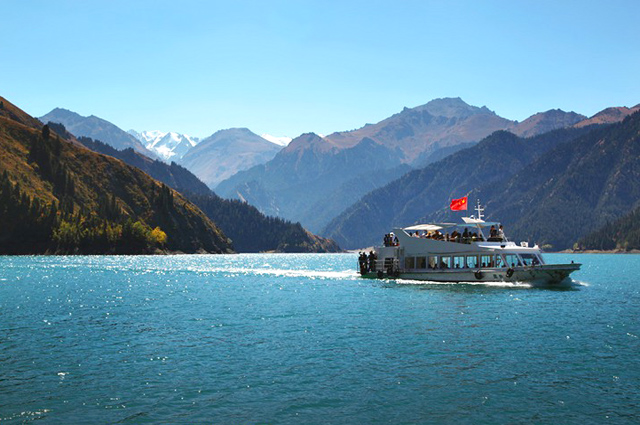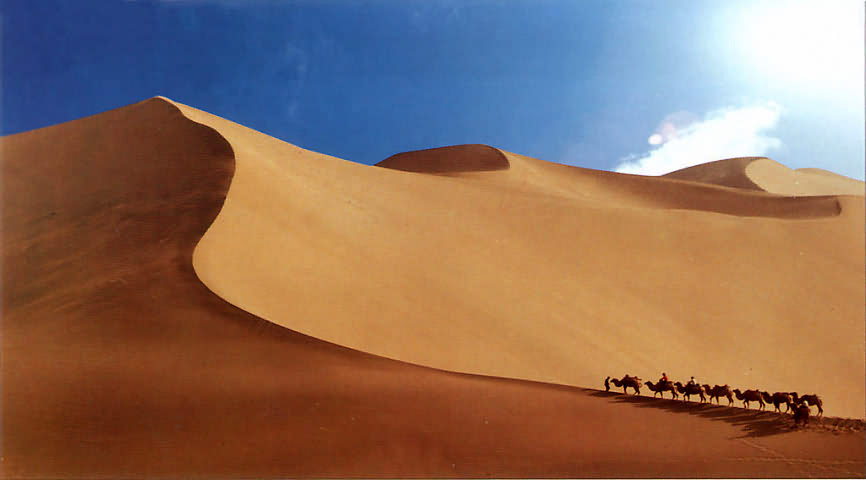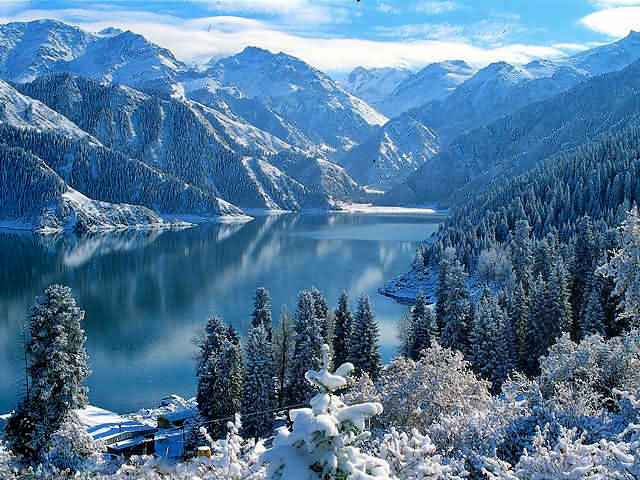Mogao Grottoes | Mogao Caves
Regarded as the largest Buddhist cave with the most abundant cultural relics in the world, Mogao Grottoes or Magao Caves, also called as the Caves of the Thousand Buddhas, is well known for a great number of colorful murals and a variety of vivid statues. It is a tremendous palace of art blending peculiar ancient architectures, spectacular painted sculptures and marvelous diverse murals.
Originally built in 366 A.D, Mogao Grottoes or Mogao Caves houses nearly five hundred caves, in which a large collection of Buddhist figures and storytelling murals illustrate the splendid history and the outstanding cultural achievements of several dynasties like North Wei, Tang, Song, Yuan, etc. There exist 2415 painted sculptures and the length of all murals reaches 45 thousand square meters, along with thousand precious relics enclosed in the secret chamber discovered recently, especially the vivid image of flying Apsara which is the symbol of Dunhuang murals.
Artistic Value of Mogao Grottoes
As a pearl of Dunhuang, one of the most important trading spots in the ancient Silk Road, Mogao Grottoes or Mogao Caves is endowed with varied masterpieces of art on wall paintings, stucco sculpture, architecture, calligraphy, woodblock printing, embroidery, silk painting, literature and so forth.
Architecture
The nearly 500 caves in Mogao Grottoes are examples of rock-cut architecture of different styles in terms of building and function, such as the chaitya-style caves featuring a square-sectioned central column and sculpture in niches, representing the stupa round which worshippers may circumambulate (parikrama) and gain blessings.
The caves are built in different scale with truncated pyramidal ceiling and flat or gabled ceiling, among which the biggest one is 40m high and 30m wide. Many of the caves originally had wooden porches or fore-temples built out from the cliff, but only with only five remaining, the two earliest of which belong to the wooden architecture of Song dynasty.
 |
 |
| The Arch in front of Mogao Grottoes | Numerous Caves in Mogao Grottoes |
Murals
Dating back to over one thousand years ago, the murals in Mogao Grottoes, with an area of 490,000 square feet, are valued for the scale and richness of content as well as their artistry.
The spectacular murals, colorfully and vividly painted on the walls and ceilings, tell about over-1500-year history and folk customs of the ancient China and illustrate a variety of religious stories, Buddhist flying Apsara, natural views like mountains, rivers and flowers, human landscapes like pavilion, tower and chamber, as well as the working scenes of ancient people. Additionally the murals, whose changing style of painting differs from different dynasties, also own the features of the arts of Iran, India, Greece, etc.
 |
 |
| Vivid Murals Painted on the Wall | Flying Apsara, the Representative of Dunhuang Mural |
Sculptures
In Mogao Grottes (Mogao Caves) there exist about 2,400 surviving clay sculptures, most of which are constructed on the hillside in a wooden frame, padded with reed, then modelled in clay stucco, and finished with paint.
The various figures consist of Buddha, Bodhisattva, heavenly kings, devas, apsaras, along with yaksas and other mythical creatures. The early sculptures were built in terms of Indian and Central Asian prototypes, with some in Greco-Indian style of Gandhara; and later they showed more Chinese elements and became gradually sinicized.
 |
 |
| Exquisite Painted Sculptures | Giant Sleepting Buddha Statue |
Travel Tips of Mogao Grottoes
Appreciation: It is only allowed to use the flashlight to appreciate the murals in Mogao Caves as most sights in Mogao Grottoes are without light. You can bring or borrow a flashlight to look deep into this colorful place. And it is permitted to take pictures in the Mogao Caves, so you can deposit your camera at the entrance of the attraction.
Best Time to Visit: Dunhuang, where Mogao Caves is situated, is with a large temperature difference between day and night, thus it is necessary to prepare different kinds of clothing. The best travel time is between May and October.
Festival: April 8 of Chinese lunar calendar is the Birthday of Buddha, when Temple Fair and Buddha Turning Ceremony are held in Mogao Grottoes. Every a large quantity of locals and tourists from all over the world come to Mogao Caves to attend this religious fair and do circling around the Maitreya Buddha Statue.
Transportation: Tourist can take the bus at the downtown Dunhuang Hotel to Mogao Caves. Starting at about 8:30am, the bus sets off every 30 minutes, ending about 7pm or 8pm.
Select Other Favorite Attractions
Guide for China tour, offers most value & amazing experience. In China, you can rely on us
Copyright © 2001 - 2025. All Rights Reserved to ChinaTourGuide.Com
Hotel Guangzhou | Guizhou Tours | Hong Kong Hotels | 棣欐腐閰掑簵 | 骞垮窞閰掑簵 | 骞垮窞浼氳閰掑簵 | Indochina Tour
Guide for China tours, offers most value & amazing experience. Chinatourguide.com. Your reliable China tour agency.



